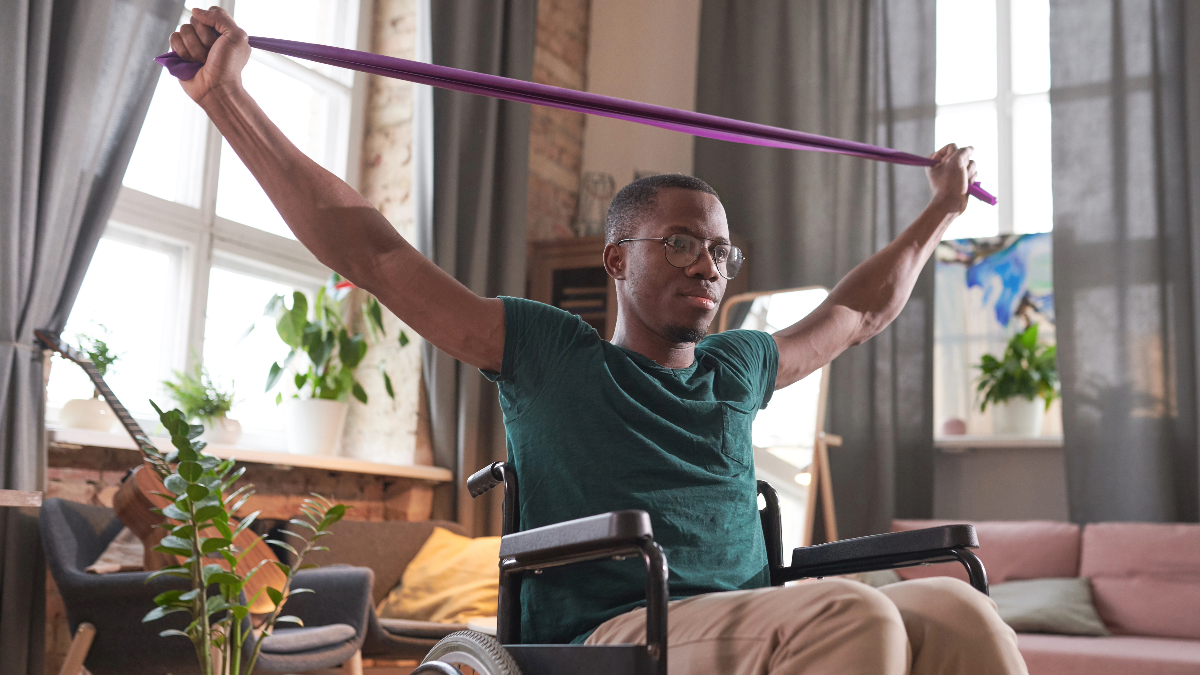12 Exercise Tips for People with Physical Disabilities
OK, maybe physical fitness isn’t your main goal in life. But for you to reach other important goals, such as maintaining your ability to live independently, work or care for others, physical fitness can increase stamina and strength.

We've collected some strategies to help you start and maintain a customized fitness program.
Seek others with disabilities who share your interest
Ask your local center for independent living, YMCA, city recreation program, senior center, or organizations addressing specific disabilities. Anyone who has addressed barriers to physical activity for themselves or others might have information about activities in your community, at a nearby facility or within your own home.
Check with someone about safe activities tailored to your abilities
If your primary physician can’t help, check with others such as rehabilitation physicians, physical or occupational therapists, personal trainers or recreation therapists.Your local center might know where to refer you. Current emphasis on physical activity for everyone makes it more likely that you will find a knowledgeable local person to consult.
Read up on it
Disability publications such as New Mobility and Paraplegia News often feature articles on physical activity, and many web sites—both mainstream and disability-related—provide information to help you get started.
Choose activities you think you’ll like
If aerobic exercise is the goal, a DVD or audiotape that focuses on people with disabilities might be the answer. For increased strength, hand weights, books, or even water bottles can be used. For stretching and flexibility, a seated yoga program, learned from a book or DVD, can help. And remember, if you choose something that doesn’t work, choose again: this is your program.
Set a goal, and go for it
If you are inactive now, setting a goal of 10 minutes of activity three times a week might be more achievable than 30 minutes per day. The idea is to start small, and build on it, but do start. If you miss a session, don’t give up; just start again as soon as you can. If you have a formalized care plan with a case manager, such as through a Home and Community-Based Services program, try to make your physical activity goal part of that plan.
Locate resources
Can you borrow exercise DVDs from your local library or center for independent living? Will your health insurance cover some sessions with a physical therapist? Could the cost of hand weights and a book on strengthening be worked into your care plan? Be creative, and expect service programs to support your health improvement efforts.
Schedule your physical activity on your weekly calendar
Taking time for your health is just as important as any event. One of the benefits of a home program is that you can make your own schedule, such as doing aerobics at 11 p.m. if that works for you.
Become aware of your triggers and barriers
A trigger is something that prompts your activity, such as setting up a schedule or exercising to your favorite music. A barrier is something that prevents activity, such as failure to set goals or not setting time aside. Figure out what works for you, and stick with it.
Record your progress
Keep a record of your activity in a private journal, in a chart on your refrigerator door, or on a calendar next to the TV. A visual record of your progress can help you keep going. Also record any changes noted, such as “can wheel out to mailbox and back without tiring” or “increased flexibility to put my own shirt on.”
Reward yourself
If you set a goal and achieve it (such as exercising three times weekly for a month), be sure to reward yourself. A bunch of flowers, a visit to the park on a nice day, or a new pair of sweat pants might be just what you need to encourage you to keep up the good work!
Find a buddy or two
Identify others around you who will support your health improvement efforts. An encouraging personal care attendant, or a roommate who works out with you, will help you focus on your activity goals. Even a friend you can call or email to report your progress can help!
It's OK to try different activities to find one that works
Each time you try to increase activity, your chances of succeeding get better. While it can be difficult to change everyday habits, it is possible and you can do it.
This is adapted from an article that first appeared on the Research & Training Center on Independent Living website.
External resources
- The National Center on Physical Activity and Disability website provides a wealth of information on physical activity and disability, including home- based exercise modules.
- The Centers for Disease Control has information on Physical Activity for People with Disabilities online.
- Health.gov offers a free PDF booklet on Physical Activity Guidelines for Americans.
- A guide on How to Exercise with Limited Mobility is available online from HelpGuide.org.